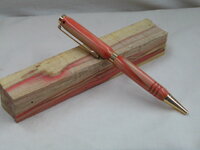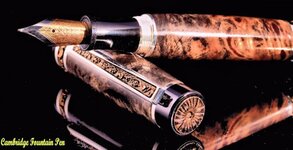Ulises Victoria
Member
Hello all. I keep looking at those nice pens all over this place.
I have turned about 20 pens in the last 8 or 10 days.
No matter how much I polish them, the final wood always has some small cracks and the finish is never really smooth. What am I missing here?
Is it the quality of the wood? (Padauk and rosewood. Bamboo comes out more smooth.) How can I achieve that glass like surface in any kind of wood?
I usually sand to 2000 grit and then apply Shellawax Cream or Boiled linseed oil.
If I apply CA first as a finish, it goes in the cracks leaving white spots.
I am sure I am missing something.
All comments greatly appreciated.
I have turned about 20 pens in the last 8 or 10 days.
No matter how much I polish them, the final wood always has some small cracks and the finish is never really smooth. What am I missing here?
Is it the quality of the wood? (Padauk and rosewood. Bamboo comes out more smooth.) How can I achieve that glass like surface in any kind of wood?
I usually sand to 2000 grit and then apply Shellawax Cream or Boiled linseed oil.
If I apply CA first as a finish, it goes in the cracks leaving white spots.
I am sure I am missing something.
All comments greatly appreciated.


